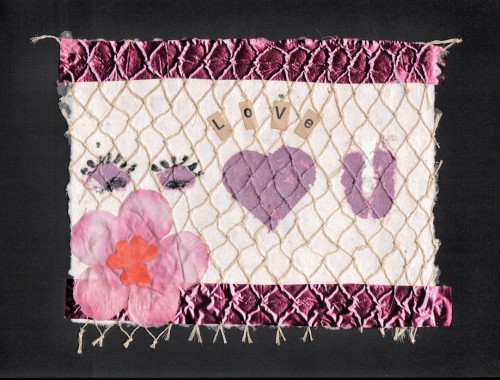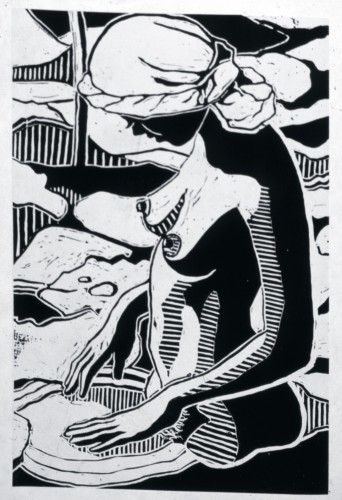Sisterhood is defined by Merriam-Webster simply as “the close relationship among women based on shared experiences, concerns, etc.,” but the truth is that there is nothing simple about sisterhood.
In today’s world—which is inundated by social media and the ever-increasing sense of self-importance and individualism that the anonymity of cyberspace affords us—all too often we treat one another with anything but sisterly love, respect, affection or kindness.
This loss of sisterhood is not seen just on social media or in cyberspace but more often in our daily lives and culture, as artists’ lyrics and everyday jargon seem to have made it commonplace for us to refer to women and each other as “bitches,” “hoes,” “sluts” and a slew of other derogatory and degrading names that eat away at the very fabric of who we are as phenomenal women, the givers of life.
It has become far too commonplace for us to tear one another down in our quest for our own success or for our relationships. It has become far too rare for us to help build one another up, support and encourage one another, and hold one another close through the storms of life and of living.
It is especially distressing to me to see how often those of us fortunate enough to be called to a life of service as HIV advocates and activists (whether by accident or design) callously tear down rather than build up our very own HIV-positive sisters. How easily we allow the false lure of power and recognition for our individual personages to cause us to stray from the greater goal of our work, to use our talents to give voice, dignity, respect and value to the voiceless, powerless, faceless millions of people living with HIV. We lose sight of the opportunities to mentor young girls and women, to create the next generation of strong female leaders, to make the paths to be traveled by those following us less onerous.
In thinking about a theme for this collection, I dug deep down into myself for something that could resonate with other women. I recalled a past conversation with my best friend of over 35 years in which I was recounting a speech I made many years ago in which I expressed the notion that much of what we do in this HIV work could be ameliorated if we hadn’t lost that sense of being our brothers’ keepers.
As I reflected on my own true, deep and lasting friendship with her as well as the path that I had walked with this disease, I smiled at the thought that we had remained best friends for so long: through puberty, school days, volleyball games, first loves, kids, godchildren, failed relationships and marriages, new loves, countless adventures of every sort imaginable, people who tried to tear us apart with lies and jealousy, living close together or separated by continents and time zones, snail mail, no mail, email, telephone, no phone, cell phone, Skype, BBM, WhatsApp and, perhaps the greatest test of all, my HIV diagnosis over 23 years ago. Through the laughter, tears, sorrow, joy, loss and gain, our sense of sisterhood has endured, and in that moment, it struck me: “My Sisters’ Keeper” would be my theme.
I selected pieces from female artists only (sorry, guys) that embodied that sense of being there for one another, that embrace and uplift the female spirit and, more than anything, made me smile and delight in being a woman who knew what it truly was to be on the receiving and giving ends of being my sisters’ keeper. I encourage you, as you peruse this gallery, to reflect on your own actions or lack thereof and make yourself a promise to remember that every sister, everywhere, every day deserves to have someone who has her back, especially as she walks the often tempestuous path of living with HIV. Ask yourself, “Was I truly my sisters’ keeper today?”
To all the beautiful, talented, wonderful women whose pieces inspired me and helped bring my theme alive, a warm and heartfelt “Thank you, you are all exceptional.” And to the incredibly special women in my own life—my mother, Joan; my daughter, Candace; my sisters, Yemi and Celeste; and, of course, my best friend forever, Lisa—as well as the countless other women who have and continue to support me through my journey called life, this gallery is dedicated to you all, who in one way or another embody what it means to be my sisters’ keeper, you have and continue to be this sister’s keepers. I love you all, and this sister is forever grateful to you.
This essay was originally printed as part of the February 2016 Visual AIDS Web Gallery. Reprinted with permission. Copyright © 2016 Visual AIDS. All rights reserved.
A former art director and creative director, Moses-Burton has served as HIV program manager for St. Maarten, a constituent country of the Netherlands, for more than 12 years and has been on the boards of various Caribbean NGOs. Most recently, she was the executive director of GNP+. Over the years, she has used her creativity to raise HIV awareness through theater, including a production of Rent in St. Maarten.

Nancer LeMoins, I am You and You are Me, 2012, watercolor and gouache, 21“x15”Courtesy of Nancer LeMoins

Jessica Whitbread, Tea Time, social practice, 2012–ongoingCourtesy of Jessica Whitbread

Shirlene Cooper, Love Positive Women, 2015, handmade paperCourtesy of Shirlene Cooper

Sam Kirk, Laying our Foundation, 2013, illustrationCourtesy of Sam Kirk

Kia LaBeija, Gia, digital photograph, featuring Soeuraya WilsonCourtesy of Kia LaBeija

Courtesy of Affrekka Jefferson







1 Comment
1 Comment